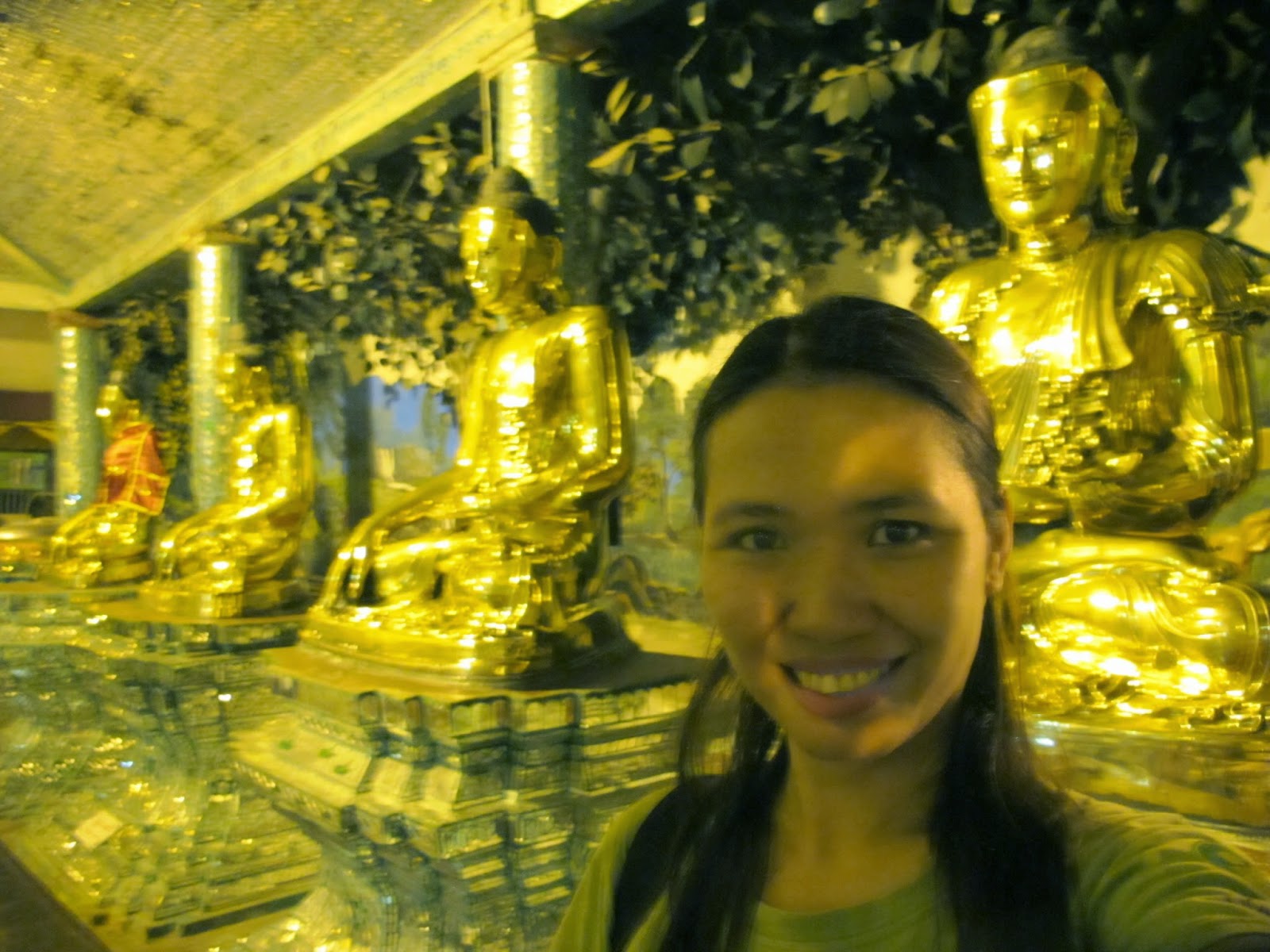Rudyard Kipling on Shwedagon's golden dome: 'It says, This is Burma!"
A vacation to Myanmar is not about food or shopping or art. It is about religion, observing Myanmarese culture and way of life, it is about walking barefoot (and eventually accepting it!) in each house of Buddha. Arriving in Yangon, one is welcomed by buildings, old and new, big and small. But being in Yangon means one can visit Mayanmar's oldest pagoda (and the world's!) called Shwedagon Pagoda.
***
English writer Rudyard Kipling who is best-known for his "Jungle Book" is said to have had set foot in this Pagoda in 1889 and exclaimed that, "Up till that sight my uninstructed eyes could not see that the land differed much in appearance from the sunderbuns, but the golden dome said: 'This is Burma, and it will be quite unlike any land you know about.'" (Wikipedia)
No wonder about that, because the Shwedagon's crown or umbrella is tipped with 5,448 diamonds and 2,317 rubies. Immediately before the diamond bud is a flag-shaped vane. The very top, the diamond bud tipped with a 76 carat (15 g) diamond. (Wikipedia)
***
It is just amazing to watch pilgrims doing their ritual.
It reminds me that humans are spiritual beings even before any religion was named.
***
Monks can be pretty updated with their gadgets.
***
Admiring the golden dome.
Wikipedia has this to say of the pagoda's history: According to legend, the Shwedagon Pagoda has existed for more than 2,600 years, making it the oldest historical pagoda in Burma and the world. According to tradition, two merchant brothers, Taphussa and Bhallika, from the land of Ramanya, met the Lord Gautama
Buddha during his lifetime and received eight of the Buddha's hairs in 588 BC. The brothers traveled back to their homeland in Burma and, with the help of the local ruler, King Okkalapa of Burma, found Singuttara Hill, where relics of other Buddhas preceding Gautama Buddha had been enshrined. When the king opened the golden casket in which the brothers had carried the hairs, incredible things happened:
“ There was a tumult among men and spirits ... rays emitted by the Hairs penetrated up to the heavens above and down to hell ... the blind beheld objects ... the deaf heard sounds ... the dumb spoke distinctly ... the earth quaked ... the winds of the ocean blew ... Mount Meru shook ... lightning flashed ... gems rained down until they were knee deep ... all trees of the Himalayas, though not in season, bore blossoms and fruit.”
***
***
The full moon in between the Pagodas.
According to some historians and archaeologists, however, the pagoda was built by the Mon people between the 6th and 10th centuries AD.
The stupa fell into disrepair until the 14th century, when the Mon king Binnya U of Bago had the stupa rebuilt to a height of 18 m (59 ft). A century later, Queen Shinsawbu (1453–72), Dhammazedi's mother-in-law, raised its height to 40 m (131 ft). She terraced the hill on which it stands, paved the top terrace with flagstones, and assigned land and hereditary slaves for its maintenance. She yielded up the throne to Dhammazedi in 1472, retiring to Dagon; during her last illness she had her bed placed so that she could rest her dying eyes upon the gilded dome of the sacred fane. The Mon face of the Shwe Dagon inscription catalogues a list of repairs beginning in 1436 and finishing during Dhammazedi's reign. It mentions Queen Shinsawbu under a Pali name of sixty-six letters. By the beginning of the 16th century the pagoda had become the most famous place of pilgrimage in Burma.
A series of earthquakes during the next centuries caused damage. The worst damage came from a 1768 earthquake that brought down the top of the stupa, but afterward King Hsinbyushin (lit. Lord of the White Elephant) of Konbaung Dynasty raised it to its current height of 99 m (325 ft). A new crown umbrella called hti (ထီး) was donated by King Mindon Min in 1871 after the annexation of Lower Burma by the British.
An earthquake of moderate intensity in October 1970 put the shaft of the hti visibly out of alignment. A scaffold was erected and extensive repairs to the hti were made.
The pagoda is listed on the Yangon City Heritage List. (Wikipedia)
***
Offering solemn prayers to Buddha.
***
A monk who seemed to guard the Buddha.
***
One of the many Buddha structure in the Pagoda.
***













Comments
Post a Comment